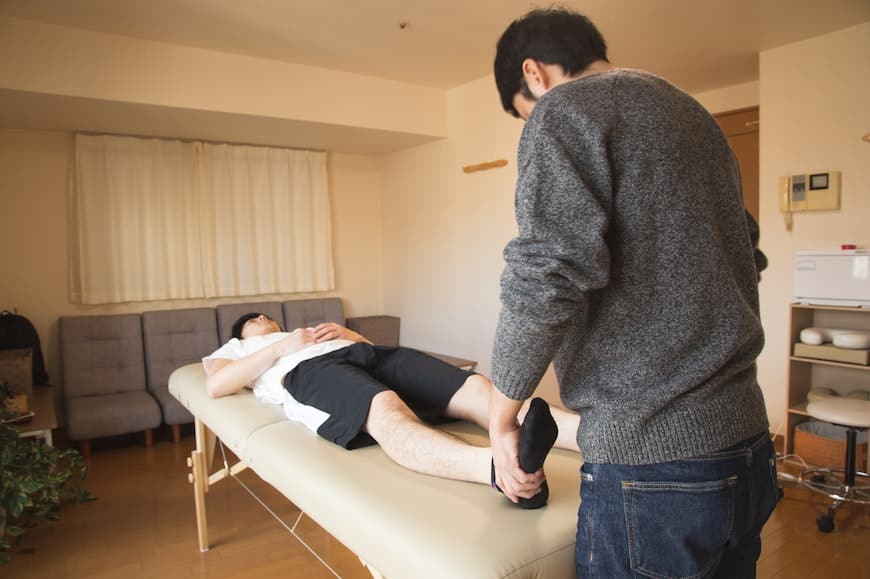
Osteopathy, An Overview by Magnus Rehab
About Osteopathy
Osteopathy is a method of alternative medicine that focuses on the musculoskeletal system and its role in overall health. The theory of Osteopathy states that the body is capable of self-regulation, self-healing and health maintenance. In order to achieve this, Osteopathic doctors (DOs) use a variety of techniques to treat patients, using physical manipulation, stretching, and massage-all depending on the goal of the patient.
The aim is to restore the health, function and stability of joints to help the body heal itself. Osteopathic doctors look to identify and treat the root causes of health problems, rather than just treating the symptoms.
Why Choose Osteopathy
There are several reasons why someone might choose to see an osteopathic doctor. One reason is the holistic approach, osteopathic doctors consider the whole person, including physical, emotional, and social factors that may be contributing to a person’s health problems.
Treatment is also non-invasive and does not involve surgery. This can be particularly appealing for those who are seeking alternatives to traditional medical treatments.
Osteopathic doctors also create customized treatment plans. During the initial visit, they take time to listen to the patient and understand their needs and concerns. And tailor their treatment to the individual, rather than applying a one-size-fits-all approach.
Types of Osteopathy
Osteopathy is a profession that has many different areas of focus, which provides the ability to treat many different conditions. Here are a few examples:
- Structural osteopathy focuses on the structure of the body and uses physical manipulation and stretching to improve alignment and function.
- Cranial osteopathy involves the use of gentle pressure on the head and face to help restore balance to the body.
- Visceral osteopathy uses gentle manipulation to help improve the function of the organs and the body as a whole.
- Pediatric & Geriatric osteopathy can help restore balance, encourage movement and improve overall health and quality of life.
Benefits of osteopathy
There are several potential benefits of osteopathic treatment, including:
- Pain relief: reduce tension and discomfort in the soft tissues of the body, such as, muscles and joints.
- Improved mobility: increase range of motion, making it easier to move and perform daily activities.
- Enhanced overall health: improve function of the musculoskeletal system to help improve overall health and well-being.
- Stress reduction: techniques such as massage and stretching, which can help reduce stress and promote relaxation.
In summary
Overall, osteopathy may be a good option for those seeking a holistic, non-invasive approach to healthcare that focuses on the musculoskeletal system and overall health.
It is always a good idea to discuss your specific healthcare needs with an osteopathic doctor to determine the most appropriate form of treatment for you. Each doctor may have different areas of focus, this should be put into consideration depending on the patient’s goal. It is important to note, however, that osteopathy is not a substitute for traditional medical care and should be used alongside other forms of healthcare as needed.
1. What can an osteopath treat?
Osteopaths are highly effective practitioners that are able to treat many common medical concerns. Treatment can help to provide relief and, in some cases, cure chronic conditions such as:
- Headaches
- Back pain, neck pain, and sciatica
- Arthritis
- Foot, ankle, hip, and knee pain
- Hand, shoulder, and elbow pain
- Sports injuries
- Neuralgia
- Pregnancy pain
- Pediatric complications from birth
- Posture-related imbalances
Osteopaths can also identify other medical conditions that aren’t treatable through Osteopathic methods and refer you to a medical specialist.
2. What can I expect during a session with an Osteopath?
Osteopathic treatment involves using their hands to identify areas of weakness, tenderness, restriction or strain within the body. Depending on the treatment plan, they can use a variety of techniques to achieve the patient’s goal. This includes stretching, pressure, massage, mobilization and manipulation, all aimed at restoring healthy bodily function.
Treatment doesn’t usually cause pain, however, if the affected area is sensitive there may be some discomfort- your Osteopath will inform you along the way. Treatment sessions are often booked with a week or two in between, to allow the body time to integrate and continue self-healing.



